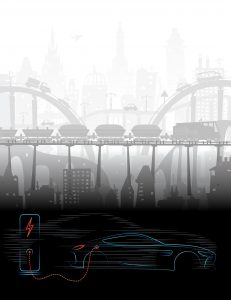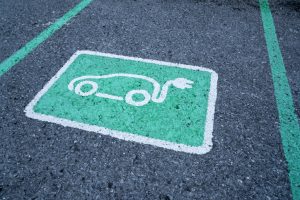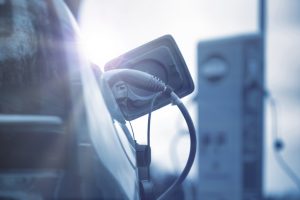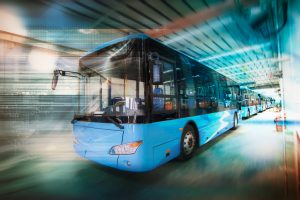 By Paul Wessel
By Paul Wessel
I’ve been thinking quite a bit lately about resilience, technically defined as “the ability to prepare and plan for, absorb, recover from, and more successfully adapt to adverse events.”
While our country clearly has fallen short on preparing and planning for the current COVID-19 adverse event, we are figuring out in real time how to absorb, recover from, and (we hope) successfully adapt–and I am struck by the role of the much-maligned, single-occupant vehicle (SOV) in making our way through.
While social distancing and sheltering at home discourage shared-transit use at the moment –and potentially strangle it in the long term–my trusty all-electric Chevy Bolt sits ready for those trips to the pharmacy and market and, if need be, hospital. If supply chains break down, bus drivers can’t drive, or gasoline can’t get delivered, as long as I have electricity (should’ve installed that solar energy system on my roof), my family is fine.
The resilient SOV was brought home to me by GM and its OnStar subsidiary’s announcement that it was giving me and other GM owners car-based free Wi-Fi and “crisis assist” (emergency operator assistance) service. So if the world goes to hell in a handbasket, my “drevice,” as my wife calls it, can keep me connected with the rest of surviving humanity and necessary emergency services.
Resilience draws from biology’s concept of adaptation as the “mechanism by which organisms adjust … to changes in their current environment.” It may be that the SOV that connects us to the outside world–or delivers us food from local restaurants or markets while we are sheltering at home–is both a cause of looming adverse events (transportation is the fastest growing source of CO2 emissions) and part of the way we survive. Can we work with both these conflicting ideas at once?
(For some good, nuanced thinking about the SOV and public transit, see transit planner Jarrett Walker’s CityLab piece on why those of who can will opt for our cars coming out of this crisis and why transit makes urban civilization possible.)
Paul Wessel is director, market development, with the U.S. Green Building Council. This post is part of a five-day series commemorating Earth Day 2020.
 California Gov. Gavin Newsom said yesterday his state will decrease the number of gasoline-powered vehicles sold there until only zero-emissions cars and trucks are allowed for sale in just 15 years. He hopes all heavy-duty trucks sold there will be be zero-emissions 10 years after that, he said.
California Gov. Gavin Newsom said yesterday his state will decrease the number of gasoline-powered vehicles sold there until only zero-emissions cars and trucks are allowed for sale in just 15 years. He hopes all heavy-duty trucks sold there will be be zero-emissions 10 years after that, he said.
 By Robert Ferrin
By Robert Ferrin A bill that would have extended free parking for electric vehicles (EVs) in state-owned facilities and at metered spaces in Hawaii died without being passed; EV drivers started paying for parking July 1.
A bill that would have extended free parking for electric vehicles (EVs) in state-owned facilities and at metered spaces in Hawaii died without being passed; EV drivers started paying for parking July 1. By Paul Wessel
By Paul Wessel By Robert Ferrin
By Robert Ferrin By Michelle Wendler, AIA
By Michelle Wendler, AIA The U.S. Department of Transportation (USDOT) announced $84.5 million in grants to fund the deployment of advanced technology buses and transit infrastructure. Fifty-two projects in 41 states received grants to buy or lease hybrid or electric-engine buses and related technologies, including charging stations. Grants include:
The U.S. Department of Transportation (USDOT) announced $84.5 million in grants to fund the deployment of advanced technology buses and transit infrastructure. Fifty-two projects in 41 states received grants to buy or lease hybrid or electric-engine buses and related technologies, including charging stations. Grants include: